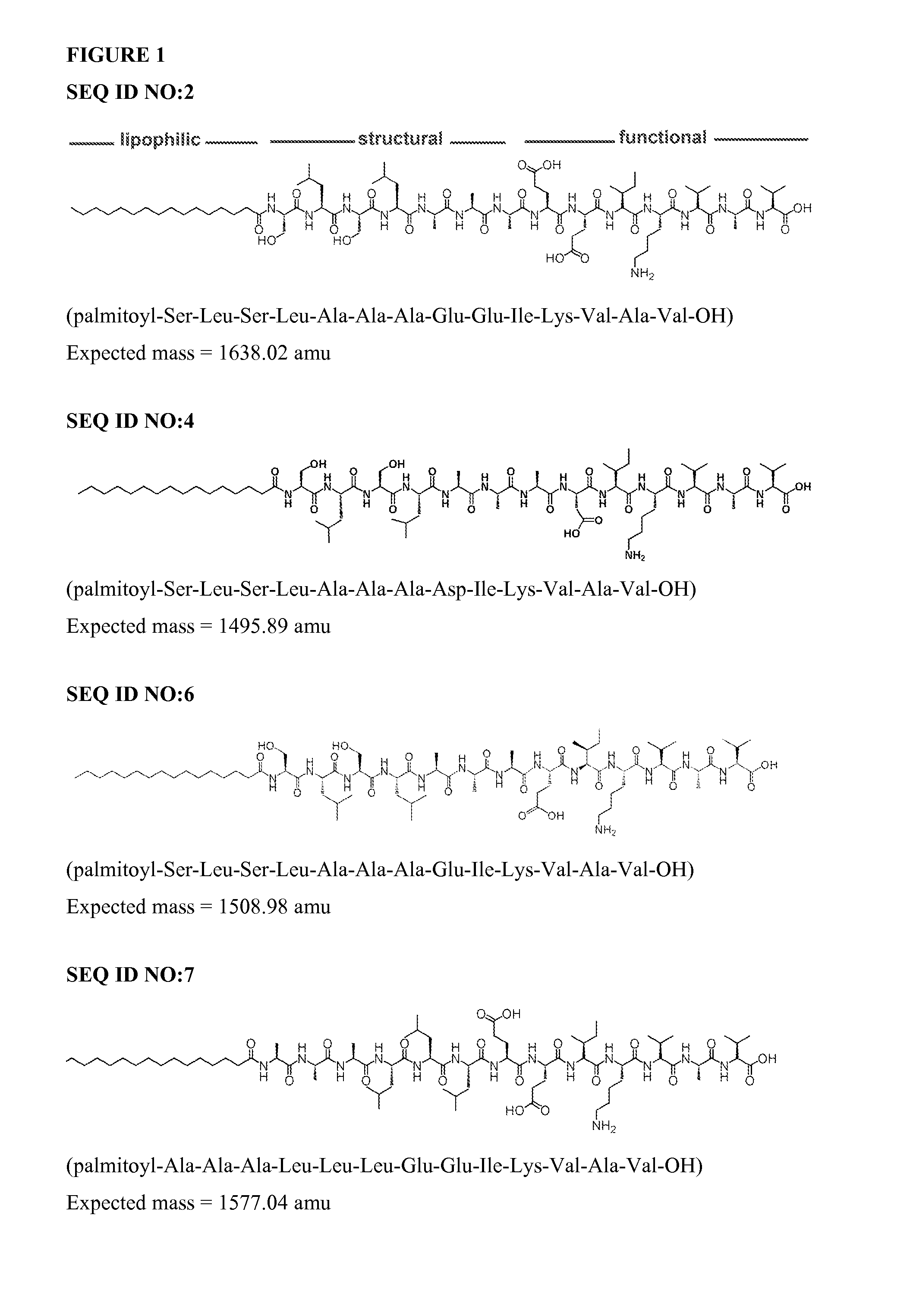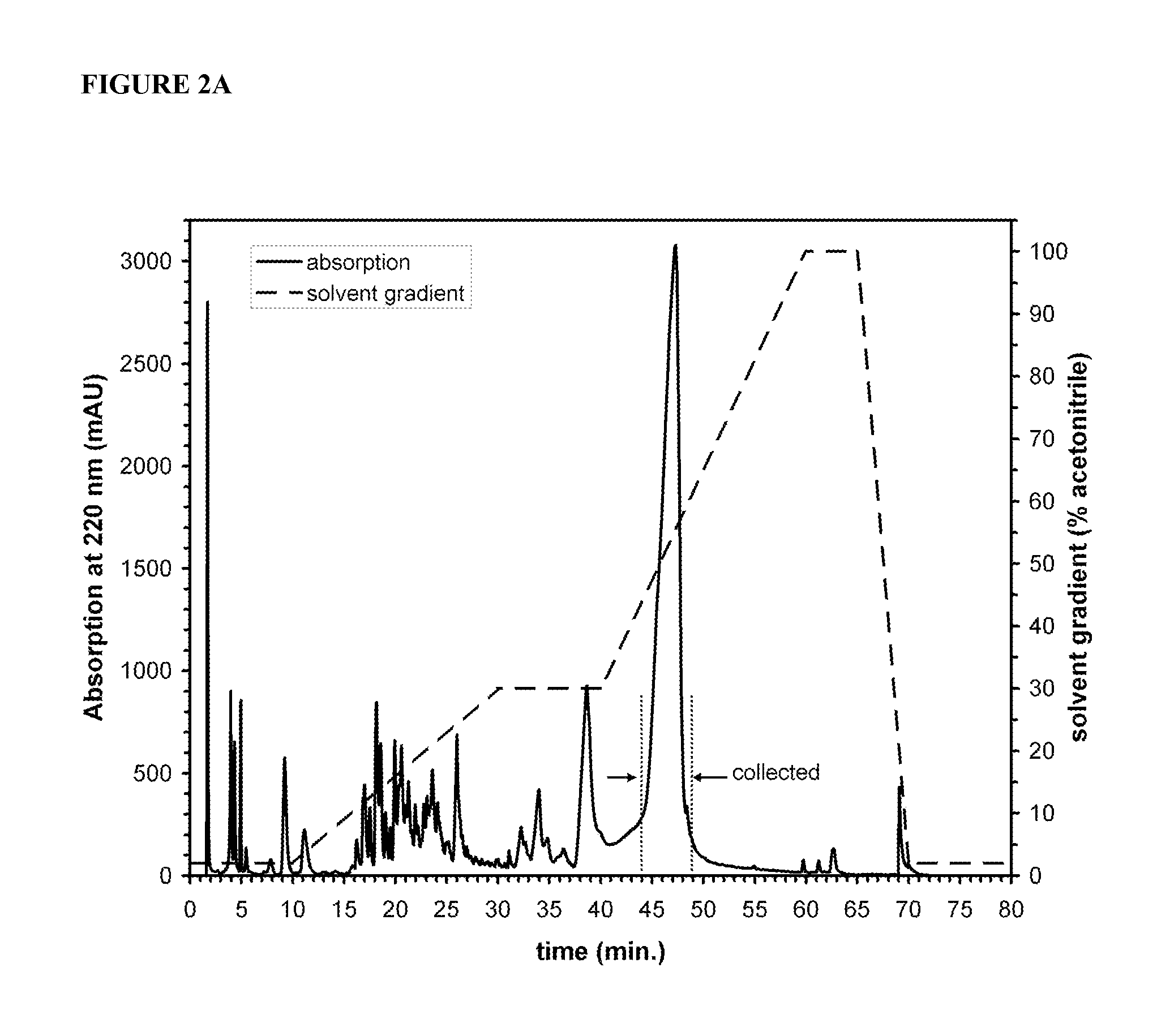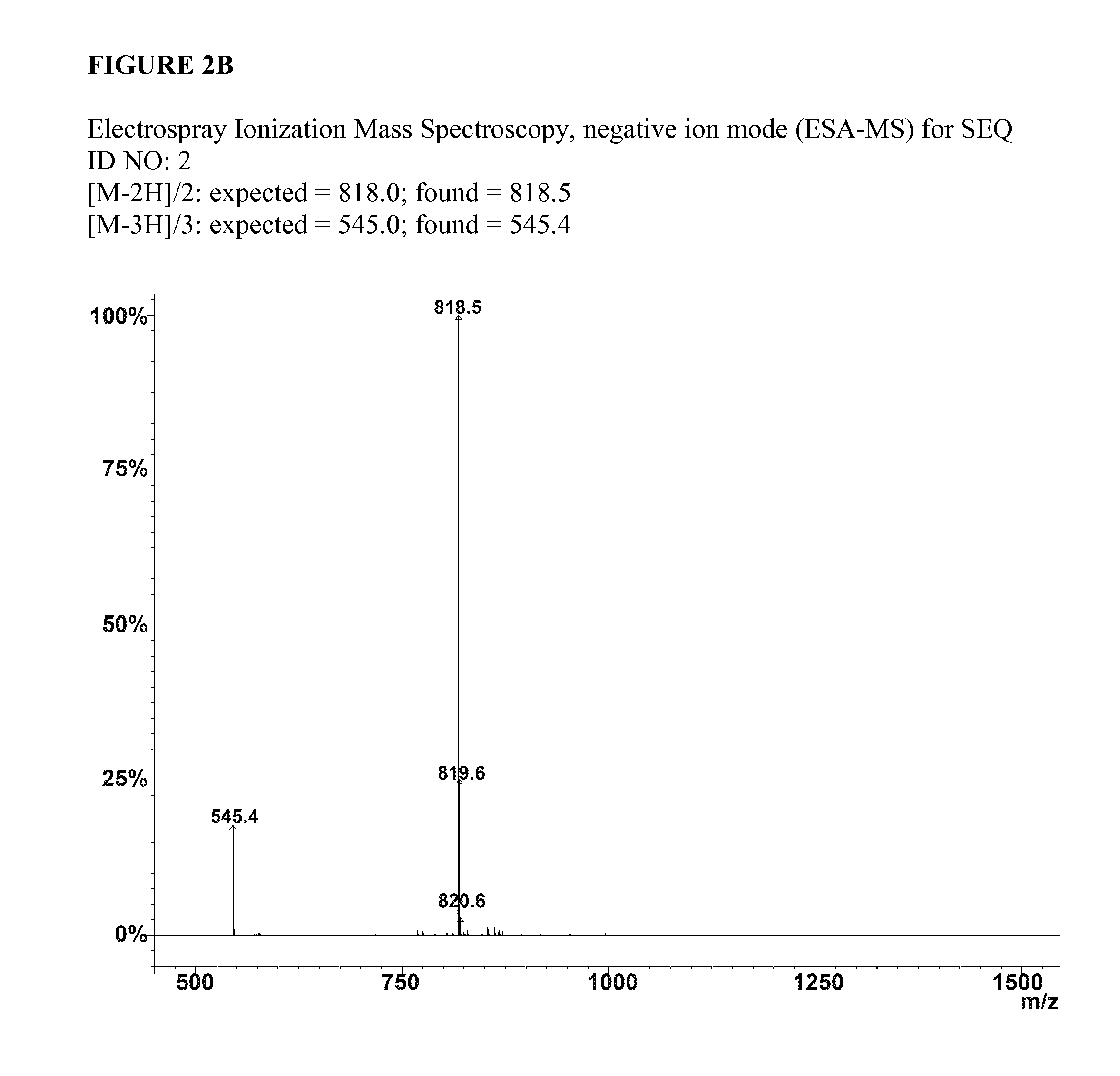Novel peptide amphiphiles having improved solubility and methods of using same
a technology of peptide amphiphiles and amphiphiles, which is applied in the direction of peptide/protein ingredients, drug compositions, metabolic disorders, etc., can solve the problems of poor cell attachment, poor integration into the site where tissue engineered materials are utilized, and difficulty in preparing any synthetic material with a structure on the nanoscale that mimics natural tissue, so as to achieve the effect of modifying the solubility of peptide amphiphiles
- Summary
- Abstract
- Description
- Claims
- Application Information
AI Technical Summary
Benefits of technology
Problems solved by technology
Method used
Image
Examples
example 1
Automated Synthesis and Purification of Peptide Amphiphiles Containing the Functional Peptide Segment XnIKVAV (SEQ ID NO:23)
[0064]1.1 Reagents:
[0065]The following reagents, or equivalents, were used as received: HBTU (2-(1H-Benzotriazol-1-yl)-1,1,3,3-tetramethyluronium hexafluorophosphate), piperidine, DIEA (m, n,-diisopropylethlamine), DMF (m, n-dimethylformamide), DCM (dichloromethane), TFA (trifluoroacetic acid), TIS (triisopropylsilane). All water was purified by reverse osmosis and filtered using a Millipore™ system to a resistivity of 18.2 Mohm-cm. 9-Fluorenylmethoxycarbonyl (Fmoc) protected amino acids were purchased from EMD Biosciences (La Jolla, Calif.). Peptides were synthesized on low-loading Fmoc-Val-Wang resin (ca. 0.2-0.3 mmole / g) to improve overall yield of the target peptide. Fmoc-Leu-Ser(ψMe,Mepro)-OH (termed ‘pseudoproline’) was used to increase the coupling efficiency of Ser-Leu-Ser-portion of the peptide.
[0066]1.2 Peptide Synthesis:
[0067]Peptides were synthesize...
example 2
Comparison of Solubility and Rheological Properties of SEQ ID NO:2, SEQ ID NO:4, and SEQ ID NO:6
[0078]The structures of the three peptide amphiphiles examined in detail herein are as follows:
SEQ ID NO:2:C16H31O-Ser-Leu-Ser-Leu-Ala-Ala-Ala-Glu-Glu-Ile-Lys-Val-Ala-Val-OHSEQ ID NO:4:C16H31O-Ser-Leu-Ser-Leu-Ala-Ala-Ala-Asp-Ile-Lys-Val-Ala-Val-OHSEQ ID NO:6:C16H31O-Ser-Leu-Ser-Leu-Ala-Ala-Ala-Glu-Ile-Lys-Val-Ala-Val-OH
[0079]Chemical structures for these molecules are also depicted in FIG. 1. Experiments were performed to examine the gelation kinetics and rheological properties of SEQ ID NO:2 with SEQ ID NO:6. Peptide amphiphile samples were dissolved in water at a concentration of 10 mg / mL. Then 0.125 mL of the solution was mixed with an equal volume of artificial cerebrospinal fluid (CSF).29-31 The artificial CSF was formulated to exhibit the normal physiological pH, tonicity and salt concentrations present in tissues of the human spinal cord. This artificial CSF was found to induce sel...
PUM
| Property | Measurement | Unit |
|---|---|---|
| solubility | aaaaa | aaaaa |
| solubility | aaaaa | aaaaa |
| diameter | aaaaa | aaaaa |
Abstract
Description
Claims
Application Information
 Login to View More
Login to View More - R&D
- Intellectual Property
- Life Sciences
- Materials
- Tech Scout
- Unparalleled Data Quality
- Higher Quality Content
- 60% Fewer Hallucinations
Browse by: Latest US Patents, China's latest patents, Technical Efficacy Thesaurus, Application Domain, Technology Topic, Popular Technical Reports.
© 2025 PatSnap. All rights reserved.Legal|Privacy policy|Modern Slavery Act Transparency Statement|Sitemap|About US| Contact US: help@patsnap.com



